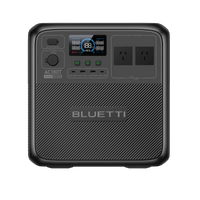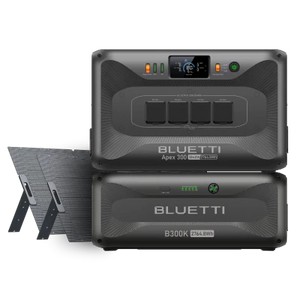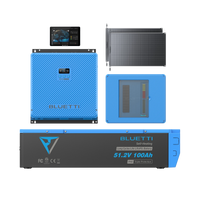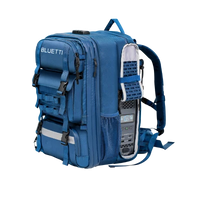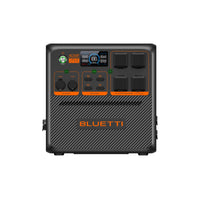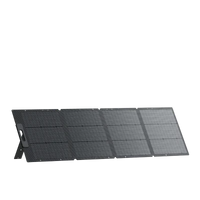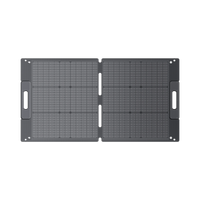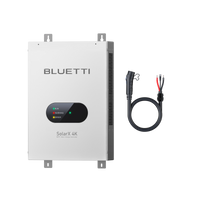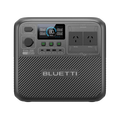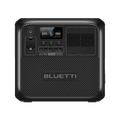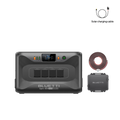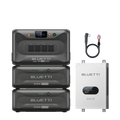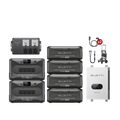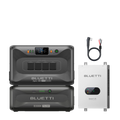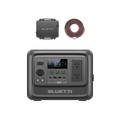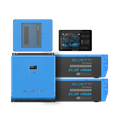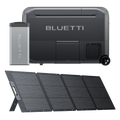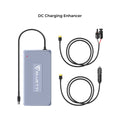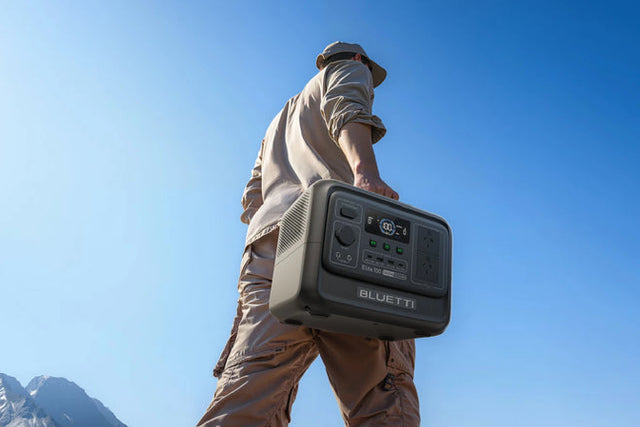Are you tired of receiving high energy bills every month? Are you looking for ways to reduce your energy costs and save some money? If you're living in Australia, then you're in luck. The Australian government is offering a $300 energy bill rebate to eligible households. In this article, we'll guide you through the process of obtaining this rebate and explain why it's important for every Australian household to take advantage of this opportunity. By the end of this article, you'll have all the information you need to start saving on your energy bills. So, let's get started and claim that $300 rebate!
Overview of the $300 energy rebate
The Australian Government has announced a much-needed relief for households in the form of a $300 energy rebate. This rebate, which will be implemented from July 2024, is a part of a $3.5 billion cost-of-living measure announced in the federal budget. The rebate is set to benefit all households in Australia, providing some much-needed financial assistance towards the ever-increasing energy bills.
What is the Energy Rebate?
The Energy Rebate is a one-time payment of $300 that will be provided to all households in Australia from July 2024. It is a part of the government's efforts to ease the financial burden of rising energy costs on households. The rebate will be automatically applied to energy bills, providing a much-needed relief to households who are struggling to keep up with the ever-increasing energy bills.
How the Energy Rebate works
Unlike previous rebates, households will not receive the $300 in cash. Instead, the rebate will be applied as a credit on their energy bills. This means that households will not have to take any additional steps or apply for the rebate separately. The $300 will be applied to their energy bills automatically, providing a direct reduction in the amount they owe to their energy provider.
Households can expect a $75 reduction each quarter on their energy bills starting in July. This means a total of $300 will be spread out over a period of four quarters, providing some relief and assistance in managing energy costs. This is particularly helpful for households who are struggling to keep up with the increasing cost of living and rising energy bills.
Eligibility Criteria
One of the best things about the Energy Rebate is that there are no eligibility criteria to receive it. Unlike other government rebates that are income-based, this rebate will be provided to all households, regardless of their income. This means that every household in Australia can benefit from this cost-of-living measure, providing some much-needed assistance and relief towards managing their energy expenses.
Additionally, there are no separate application processes or forms to be filled out to receive the Energy Rebate. As mentioned earlier, the rebate will be automatically applied to energy bills, making the process hassle-free for households. This also means that households do not have to take any additional steps to receive the rebate, allowing for a seamless and efficient process.
The $300 energy rebate is a much-needed relief for households in Australia, providing some assistance in managing the rising cost of energy. With no eligibility criteria and a seamless application process, all households can benefit from this cost-of-living measure. From July 2024, households can expect a $75 reduction each quarter on their energy bills, providing a total of $300 in rebates over a period of four quarters. This rebate is a testament to the government's efforts in supporting households and easing their financial burden during these challenging times.
What happens if your annual bill is less than $300?
If your annual energy bill is less than $300, you may be wondering if you are still eligible for the $300 energy rebate in Australia. The answer is yes! The $300 energy rebate is available to all eligible households, regardless of how much their annual energy bill is. However, the rebate will appear in your account as a credit added in four instalments instead of being applied towards your bill.
This means that even if your annual energy bill is less than $300, you will still receive the full amount of the rebate. The credit will be applied towards your future energy bills, which can help lower your overall energy expenses for the year.
For example, if your annual energy bill is $250, you will still receive the $300 energy rebate, but it will be applied as a $75 credit in four instalments towards your future energy bills. This can be a great way to save money on your energy expenses and make your energy consumption more affordable.
It is important to note that the rebate will only be applied to your energy bills and cannot be redeemed for cash. This means that if your annual energy bill is less than $300, you will not receive any cash back for the remaining amount of the rebate. However, the credit can still be a significant saving on your future energy bills.
In order to receive the $300 energy rebate, you must be eligible and apply for it through your energy provider or state government. The eligibility criteria may vary depending on the state you live in, but it typically includes factors such as being a low-income household, having a valid concession card, or being a pensioner.
If you are unsure about your eligibility, you can contact your energy provider or visit the government website for more information. It is important to apply for the rebate as soon as possible, as it usually has a limited time frame and can vary by state.
even if your annual energy bill is less than $300, you are still eligible for the $300 energy rebate in Australia. The rebate will be applied as a credit in four instalments towards your future energy bills, which can help make your energy expenses more affordable. Make sure to check your eligibility and apply for the rebate to take advantage of this opportunity to save money on your energy bills.

How do I get the $300 energy rebate?
If you reside in Australia and are struggling to pay your energy bills, you may be eligible to receive a $300 energy rebate. This financial assistance is provided by the government to help households and small businesses with their energy costs. The good news is that obtaining this rebate is a simple process and can be done without any hassle. Here is a guide on how to get the $300 energy rebate in Australia.
Step 1: Check your eligibility
The first step to receiving the energy rebate is to check if you are eligible for it. This rebate is available to low-income households and small businesses who hold a valid concession card, such as a Pensioner Concession Card, Health Care Card or Department of Veterans' Affairs Gold Card. If you are a customer of a participating energy retailer, you may also be eligible for the rebate. It is important to note that eligibility criteria may vary slightly depending on the state or territory you reside in.
Step 2: Contact your energy retailer
Once you have determined your eligibility, the next step is to contact your energy retailer to request the $300 energy rebate. You can do this either by calling their customer service number or by filling out an online form on their website. Make sure to have your concession card details and energy account information ready when you contact your retailer.
Step 3: Receive your rebate
Once your energy retailer processes your request, the $300 rebate will be automatically applied to your energy bill. This means that you will see a reduction of $300 in your next bill, making it more affordable for you to pay. If you have a direct debit payment set up for your energy bills, the rebate will be automatically deducted from your next payment.
Additional information
If you are a resident of New South Wales, you may also be eligible for a one-off energy rebate of $50 to help with the cost of living. This rebate is available to households who have received the Family Energy Rebate in the past, but are no longer eligible for it due to changes in their income. To receive this additional rebate, you will need to contact your energy retailer and request it separately.
If you are a small business owner, you may also be eligible for a higher rebate of $500. Small businesses can apply for this rebate directly through the Department of Industry, Science, Energy and Resources website.
The $300 energy rebate is a great initiative by the government to help individuals and small businesses with their energy costs. By following the simple steps mentioned in this guide, you can easily receive this rebate and reduce the financial burden of your energy bills. If you are unsure about your eligibility or need more information about the rebate, you can contact your energy retailer or visit the government website for further assistance. Don't miss out on this opportunity to save on your energy bills – apply for the $300 energy rebate today!
Who is Eligible for the $300 Rebate?
All Australian households are eligible for the $300 energy bill rebate. This includes homeowners, renters, and even those living in public housing. The rebate is part of the government's efforts to provide financial relief to households struggling with the rising cost of energy. However, there are a few criteria that need to be met in order to receive the rebate.
The first criteria is that the household must have a valid electricity account. This means that the account must be in the name of the person applying for the rebate. If you are a renter, your name should be listed on the electricity bill or you should have a letter from your landlord stating that you are responsible for paying the electricity bill.
Secondly, the household must be connected to the main electricity grid in Australia. This means that households using alternative energy sources such as solar panels or wind turbines are not eligible for the rebate.
The third criteria for eligibility is that the household must have been using electricity in the past 12 months. This is to ensure that the rebate goes to those who are actively using electricity and paying for it. If you have recently moved into a new home or have not been using electricity for the past year, you will not be eligible for the rebate.
In addition, households must meet certain income criteria in order to receive the rebate. For single-person households, the annual income must be below $52,000. For couples, the combined annual income must be below $75,000. For families with children, the combined annual income must be below $90,000. These income criteria are based on the previous financial year, so if your income has changed significantly in the past year, you may still be eligible for the rebate.
Furthermore, households must be receiving at least one of the following government payments in order to receive the rebate:
- Age Pension
- Disability Support Pension
- Carer Payment
- Parenting Payment
- Newstart Allowance
- JobSeeker Payment
- Sickness Allowance
- Youth Allowance
- Special Benefit
- Widow Allowance
- Partner Allowance
- Farm Household Allowance
If you are receiving any of these government payments, you will automatically be eligible for the rebate. However, if you are not receiving any of these payments but still meet the income criteria, you may still be eligible for the rebate. You will need to apply for the rebate through your state or territory government website.
It is important to note that the $300 energy bill rebate is a one-time payment and will not be automatically applied to your electricity bill. You will need to either apply for the rebate or have it automatically applied by your state or territory government.
In summary, all Australian households are eligible for the $300 energy bill rebate as long as they have a valid electricity account, are connected to the main electricity grid, have been using electricity in the past 12 months, and meet the income criteria. If you are receiving a government payment, you will automatically be eligible for the rebate. If not, you will need to apply for it through your state or territory government. The rebate is a great opportunity to ease the burden of rising energy costs, so make sure to take advantage of it if you are eligible.

Payment Dates
The $300 Energy Bill Rebate in Australia will be distributed over four quarterly payments, in alignment with the financial quarters of the year. This means that eligible households will receive their rebate payment every three months, starting from July 2024.
The first payment will be made in July 2024, which will cover the period of April to June 2024. This first payment will provide some immediate relief to households struggling with high energy bills.
The second payment will be made in October 2024, covering the months of July to September 2024. This allows for a consistent distribution of the rebate, ensuring that households continue to receive financial assistance with their energy bills.
The third payment will be made in January 2025, covering the months of October to December 2024. This payment will come at the start of a new year, providing some much-needed relief after the holiday season and the increase in energy consumption during the summer months.
The final payment will be made in April 2025, covering the months of January to March 2025. This payment will mark the completion of the $300 Energy Bill Rebate program and provide a final boost to households struggling with high energy costs.
It is important to note that these payment dates are subject to change and may be adjusted by the Australian government. Any changes will be communicated to eligible households in a timely manner.
the quarterly payment schedule for the $300 Energy Bill Rebate provides a consistent and regular source of financial assistance to households in need. It is designed to ease the burden of high energy costs and improve the overall affordability of energy for all Australians.
What is available in each state?
All households in Australia are eligible for a $300 energy bill rebate, which will be paid in quarterly instalments of $75 starting from July 1. However, some states have additional rebates available for their residents.
Queensland (QLD)
Queensland residents are eligible for a combined energy rebate of $1,300. This includes $1,000 paid upfront and $300 paid in $75 quarterly instalments starting from July 1. This rebate is available to both homeowners and renters.
Western Australia (WA)
WA households can receive a combined energy rebate of $700, which will be paid in two instalments of $350 in the July-August and December-January billing cycles. This rebate is available for both gas and electricity bills. Eligibility criteria vary for each type of bill.
New South Wales (NSW)
In NSW, low-income households can receive a Low Income Household Rebate of $285 to help cover their electricity bill. This can be applied as a credit on their energy bill or as a direct payment.
Victoria (VIC)
Eligible concession card holders in Victoria can receive a $50 annual Utility Relief Grant to assist with their energy bill. This grant will be applied as a credit on their bill.
South Australia (SA)
In SA, low-income households can receive a Cost of Living Concession, which includes an energy bill rebate of up to $226. Eligibility criteria vary for homeowners and renters.
Tasmania (TAS)
Tasmanian residents can receive a $125 electricity concession and a $27.50 water and sewerage concession to help with their energy bills. Eligibility criteria vary for each concession.
Australian Capital Territory (ACT)
The ACT Government provides a $700 Utilities Concession to eligible low-income households to help cover their energy bills. This can be applied as a credit on their bill or as a direct payment.
Northern Territory (NT)
In the NT, eligible concession card holders can receive a $97.70 quarterly concession to help with their electricity bill. This can be applied as a credit on their bill or as a direct payment.
The availability and criteria for these rebates may change over time, so it is important to check with your state government for the most up-to-date information. Taking advantage of these energy bill rebates is a great way to help reduce your household expenses and save money. Make sure to check your eligibility and apply for any available rebates to make the most of your energy bill payments.












